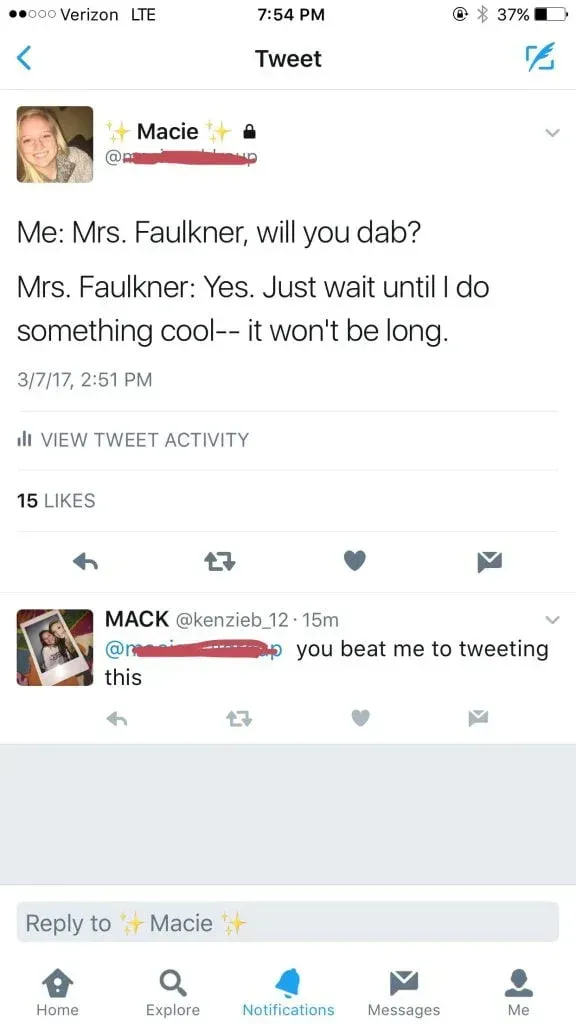Why Embracing 'I Don’t Know' Makes You a Stronger Teacher
We’ve all been in those moments as teachers where a student asks a question, and we just don’t know the answer. It can feel awkward, uncomfortable, or even embarrassing—especially early in your teaching career when you might think you’re supposed to have all the answers. When I first started teaching -- and even now -- admitting “I don’t know” felt impossible. I worried it would make me look unprepared or unqualified in front of my students. Instead of confidently navigating those situations, I sometimes stuttered through an explanation—or worse, made something up. Over time, though, I’ve learned that saying 'I don’t know' as a teacher can actually be empowering, both for you and your students. Now, I view it as an opportunity for growth rather than a sign of weakness. After all, we’d never let our students use “I don’t know” as an excuse to give up. Instead, we push them to think critically by asking, “What do you know so far?”
In this post, I’m sharing how embracing “I don’t know” can transform your teaching mindset and help alleviate some of the stress we all feel as educators.
Letting Go of the Pressure to Know Everything
We've all had this nightmare: The one where you’re in front of a class and students ask you a question to which you don't know the answer. If you are like me, you felt horrified. It’s the little stuff I’m talking about here that students ask that would make me squirm if I didn’t know the answer. For example, what’s for lunch? Really! I just always felt like I had to be on top of everything 100% of the time. Honestly, that is just one more thing I don’t need on my plate. (Pun intended) No one gives me the lunch menu in email or in my box. I would have to make a special trip to get it. So, no. I don’t know what is being served for lunch, what clubs are meeting Friday, how to clean the cookies on a tablet, or who is taking the bowling field trip next week. Not my circus. I don’t need that extra info floating around in my head! Kids just expect that since we are the teacher, we should know ALL the answers. Frankly, that’s just a lot of extra pressure I don’t need. “Let me help you find someone who does know” – that’s my response. It’s so liberating to free myself of the pressure of feeling like I must respond to every question a student asks, but I never leave them hanging without a way to find the answer they need.
When Classroom Questions Go Beyond Your Expertise
Of course, there are times when students ask questions that feel more relevant to the lesson—or at least somewhat related. Those moments used to really make me nervous. When I taught British Literature as a senior English teacher, I covered a lot of British literature. While I’d studied enough to teach the material effectively, I didn't have every detail about medieval life memorized. Some students, inspired by video games or movies, are curious about obscure historical details—like the names of every king and queen from the time period. I just don't know those details.
Similarly, during our book club discussions, students sometimes catch details I’ve forgotten. With three different novels going at once across multiple classes, it’s easy for me to mix things up. For example, a couple of weeks ago, my students in a book club discussion of Columbine asked about the gloves Eric and Dylan wore during the massacre. They had a fascinating point about the symbolism, which led to another question about whether one of them was left- or right-handed. I vaguely remembered that detail but couldn’t recall it clearly.
Instead of trying to bluff my way through, we looked it up together. To my surprise, we discovered it was actually an unresolved detail in the investigation. Moments like these remind me that
saying ‘I don’t know’ as a teacher is an opportunity to model curiosity and collaboration. It shows students that learning doesn’t stop with their teacher—it’s a shared journey.
When Students Become the Teachers
How many times are students doing something about which you don’t have a clue? Honestly, I could make a list a mile long—or longer. These days, it might be phrases like “rizz,” “no cap,” or “it’s giving,” and half the time I’m not even sure I’m hearing them correctly. Sometimes, I ignore their newest fad, but other times, if it somehow relates—or if I’m curious—I’ll ask them to teach me. For example, a few years ago, I learned how to dab. (Thankfully, that’s one fad that didn’t last long.) And there was the time my students introduced me to Danielle Bregoli—only because her infamous statement showed up on one of their Canterbury Tales memes. I wasn’t going to let it fly because I didn’t know what it meant. I literally said, “I have no idea what that even means. No, you can’t use it.” Laughter erupted from the entire class as they quickly told me the entire story—complete with video. I am now scarred for life.
All in all, I don’t really need to know who Danielle Bregoli is or how to dab, but the real benefit is that I’m keeping the channel open between us, so they know I value their knowledge and expertise. Sometimes, that knowledge is actually useful. 🙂 For example, once we were reading an article about horror movies, and students were trying to recall the part of the brain that handles fear. It was on the tip of my tongue, but I couldn’t recall it. Some of the anatomy students had just studied the brain, and they were able to chime in and explain. That’s a classroom success story to me—because the pressure wasn’t all on me to know the answer, and students had the chance to shine by sharing their expertise.
When “I Don’t Know” Is a Wake-Up Call
Every now and then, a student will ask a question I really should know the answer to. One moment that sticks with me happened this semester while introducing The Canterbury Tales to my seniors. I mentioned in my slideshow that Chaucer didn’t finish all the tales he intended to write. Immediately, a student raised their hand and asked, “Why not? How many did he finish?” My heart sank.
I hadn’t taught this unit in a few years due to scheduling, and I assumed I was familiar enough with the material to dive right in. But I had taken for granted the importance of refreshing my memory. Of course, I could’ve fallen back on, “Let’s look it up,” but as this was truly my area of expertise, I felt I should’ve remembered. I admitted to my students, “I don’t know, but I’ll let you know tomorrow.” That night, I brushed up on my notes, and yes, I lost a little sleep.
This experience reminded me of something important:
even veteran teachers need to revisit their material to stay sharp. Saying “I don’t know” to my students in this situation wasn’t ideal, but it was honest. It also reinforced that I can always grow in my teaching practice.
Teaching the Value of Questions (and How to Find Answers)
I love it when students ask questions. Whether they’re curious about the material or questioning me in a respectful, productive way, I welcome their inquiries. Questions are at the heart of learning, and they create opportunities for meaningful engagement. That said, there are always going to be some questions I can’t answer—end of story. And that's ok.
Sometimes, I think students ask challenging questions just to see if they can catch me off guard or make me squirm. Regardless of their intent, being transparent and saying “I don’t know” shows them I’m human - and can de-escalate when needed. It also shifts the focus from perfection to process. By modeling curiosity and the value of research, I teach students how to find the right answers the right way. This approach is far more valuable than pretending to know everything.
Ultimately, owning those “I don’t know” moments isn’t embarrassing—it’s empowering. It’s a great teaching moment and a reminder that education is about asking questions, seeking answers, and embracing the journey of learning.
In Conclusion
By embracing the power of saying “I don’t know,” I’ve been able to let go of the unrealistic expectation that I need to have all the answers. More importantly, it’s opened up new opportunities for deeper learning with my students. Whether it’s redirecting them to the right person or exploring the answer together, “I don’t know” is no longer something I fear as a teacher. It’s something I use to empower myself and my students.
Here are a few other times when saying "I don't know" can really make a difference:
- “I don’t know when I’ll get around to that because I’m so swamped.”
- “I don’t know if you realize just how proud of you I am.”
- “I don’t know that it really matters if…”
- “I don’t know why people do bad things…”
- “I don’t know what might happen next because of…”
Each of these phrases reminds me that “I don’t know” doesn’t have to signal weakness or failure—it can be a sign of honesty, vulnerability, or even an invitation to connect. Sometimes, “I don’t know” opens the door to deeper understanding, whether with my students, my colleagues, or myself.
It’s liberating to let go of the pressure to always have the answers. After all, teaching isn’t just about knowing everything—it’s about inspiring curiosity, modeling humility, and showing our students that learning is a lifelong process.
Love this content?
Sign up for my email newsletter with more tips, ideas, success stories, and freebies!
















